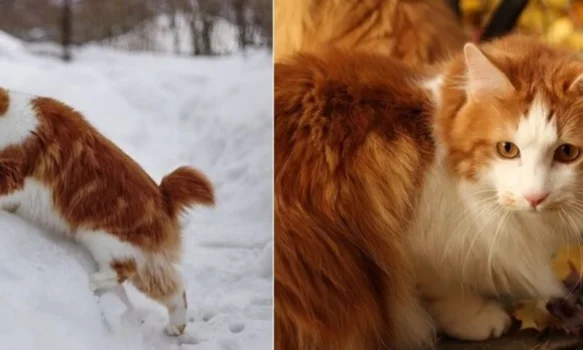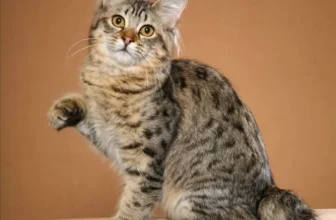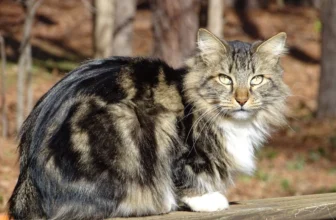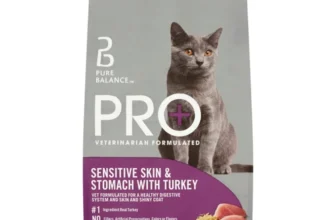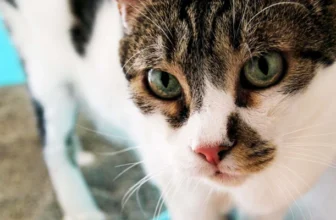When it comes to keeping our furry friends healthy, responsible breeding can play a crucial role in preventing genetic disorders. For American Bobtail cats, a unique and beloved breed, this is especially important. As cat owners, we want to ensure that our pets lead happy and healthy lives, and that starts with understanding the importance of responsible breeding. In this article, we will discuss the unique traits of American Bobtail cats, the prevalence of genetic disorders in this breed, and how responsible breeding can make a difference in your cat’s life. So let’s dive in and discover how we can give these wonderful creatures the care and attention they deserve.
Understanding American Bobtail Cats: An Overview
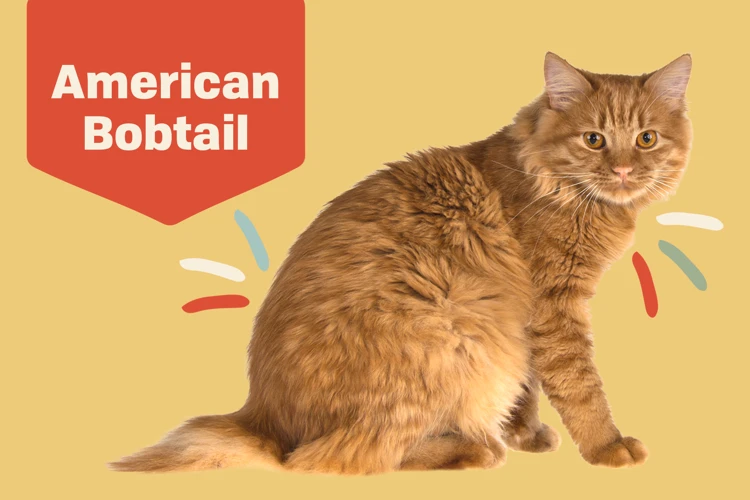
American Bobtail Cats are one of the most beloved cat breeds in America, known for their loyalty, affectionate nature, and unique bobbed tail. However, as with any breed, American Bobtails are prone to certain genetic disorders that can affect their health and quality of life. It is essential to have a comprehensive understanding of the breed’s various characteristics, both positive and negative. In the next sections, we will go over some of the key aspects of American Bobtail Cats, such as their unique traits, prevalence of genetic disorders, and the significance of responsible breeding. For more information on genetic disorders in American Bobtail Cats, visit our article on genetic disorders in American Bobtail Cats.
The Unique Traits of American Bobtail Cats
American Bobtail Cats are a unique and fascinating breed known for their distinctive physical features and charming personality traits. These cats are easily recognizable due to their shortened or “bobbed” tails, which are a result of a natural genetic mutation that occurred many years ago. Not only do they boast an adorable appearance, but they also have a great temperament, making them wonderful pets for families with children or other animals.
Physical Characteristics
In addition to their unique tails, American Bobtail Cats have several other notable physical characteristics. Their coats can come in a variety of colors, including tabby, tortoiseshell, and solid colors such as black or white. Their coats are thick and lush, requiring regular grooming to maintain their beauty.
These cats are also known for their muscular build, powerful legs, and large paws. They have wide-set ears that are often tufted with hair, adding to their overall strong and wild appearance. On average, American Bobtail Cats weigh between 8-13 pounds, with males typically being larger than females.
Personality Traits
In addition to their distinctive physical features, American Bobtail Cats also have wonderful personality traits that make them beloved pets. They are typically known for their friendly and outgoing demeanor as well as their intelligence and playfulness. They are often described as affectionate and loyal, making them great companions for families and individuals alike.
However, it’s important to keep in mind that like any cat breed, American Bobtail Cats can display behavior problems if not properly socialized or trained. This is why it’s important for potential owners to understand the unique needs of this breed and provide them with proper care and attention.
If you’re interested in adopting an American Bobtail Cat, it’s important to be aware of the potential genetic disorders that can arise in this breed. Consider visiting our article about bobtail cat genetic disorders to learn more about how to avoid genetic disorders and what steps can be taken to manage any health issues that may occur.
The Prevalence of Genetic Disorders in American Bobtail Cats
According to research, American Bobtail cats are prone to certain genetic disorders due to their breeding history, which has resulted in a limited gene pool. Some of the most common genetic disorders that can affect American Bobtail cats include hip dysplasia, hypertrophic cardiomyopathy, and spinal muscular atrophy.
Hip dysplasia is a condition in which the hip joint doesn’t develop properly, leading to arthritis, pain, and lameness. Hypertrophic cardiomyopathy is a condition in which the heart muscle thickens, making it difficult for the heart to pump blood effectively. This condition can lead to heart failure, blood clots, and sudden death. Finally, spinal muscular atrophy is a condition that affects the nerves responsible for muscle movement, leading to weakness and muscle wasting.
If left unchecked, these genetic disorders can have serious consequences for American Bobtail cats, affecting not only their quality of life but, in some cases, even leading to premature death. It’s essential that breeders and owners alike take steps to prevent or manage these conditions.
One key way to do this is through responsible breeding. By ensuring that breeding only occurs between cats that have been genetically tested and are free of common genetic disorders, breeders can decrease the likelihood of passing on these conditions to future litters. Responsible breeding means choosing cats for breeding based not just on their physical appearance but also on their health and genetic history.
Additionally, owners of American Bobtail cats should be aware of the signs and symptoms of common genetic disorders so they can catch the condition early and seek appropriate treatment. Regular visits to a veterinarian, genetic testing, and careful monitoring of symptoms are all essential in keeping American Bobtail cats healthy and happy.
It’s clear that managing genetic disorders in American Bobtail cats requires a combination of responsible breeding and careful management. By taking these steps, breeders and owners can help ensure that cats remain healthy and free from the effects of these devastating conditions.
To learn more about managing genetic disorders in American Bobtail cats, check out our guide on managing American Bobtail cats with genetic disorders.
The Importance of Responsible Breeding
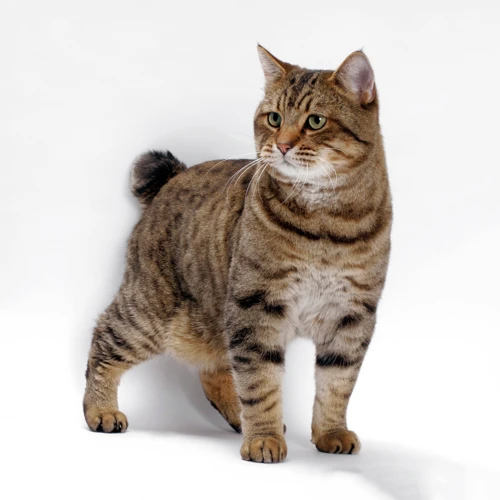
Breeding of cats is a crucial element for a healthy lineage. Irresponsible breeding can cause several genetic disorders and defects among the offspring. It is necessary to avoid such risks to ensure the well-being of American Bobtail Cats. To achieve this, responsible breeding is of utmost importance. Responsible breeding, when done correctly, can reduce or even eliminate the incurrence of genetic disorders in cats. In this article, we’ll discuss the significance of responsible breeding in-detail, including the financial and emotional cost of genetic disorders that can be prevented through responsible breeding. Additionally, we’ll outline the steps to responsible breeding, which will help breeders maintain a healthy lineage of American Bobtail Cats. So, let’s dive in and understand the importance of responsible breeding. For more information on avoiding genetic disorders in American Bobtail Cats, please refer to our previous article.
Why Responsible Breeding is Crucial for the Health of American Bobtail Cats
Responsible breeding is absolutely crucial for the health of American Bobtail cats. American Bobtail cats are prone to various genetic disorders that can severely impact their quality of life. By responsibly breeding these cats, breeders can help minimize the risk of genetic disorders and ensure that future generations of American Bobtail cats are healthy and happy.
One of the most important reasons for responsible breeding is to avoid the passing down of genetic disorders. American Bobtail cats can inherit genetic disorders such as hypertrophic cardiomyopathy (HCM), a condition that affects the heart muscle, and hip dysplasia, a condition that affects the hip joint.
Breeders who do not take responsibility for their breeding practices can pass down these genetic disorders to future generations, causing widespread health problems and suffering for these cats.
In addition to minimizing the risk of genetic disorders, responsible breeding can also help to enhance the overall health and vitality of American Bobtail cats. Breeders who prioritize the health and well-being of their cats will select breeding stock based on their health, genetic background and temperament, ensuring that the cats are well-suited for reproduction.
This approach can help to reduce the risk of genetic disorders and improve the overall health of American Bobtail cats.
Ultimately, responsible breeding is essential for the health and welfare of American Bobtail cats. Breeding programs that prioritize the health and well-being of these cats can help to prevent the spread of genetic disorders and ensure that future generations of American Bobtail cats are healthy and happy.
To learn more about managing American Bobtail cats with genetic disorders, see our related article about managing American Bobtail cats with genetic disorders. You can also learn more about genetic testing for American Bobtail cats to help prevent genetic disorders.
The Economic and Emotional Cost of Genetic Disorders
Genetic disorders in American Bobtail Cats can be costly both emotionally and financially. Many owners of American Bobtail Cats have to deal with the heartache of seeing their beloved feline suffer from a debilitating genetic disorder, which often leads to expensive veterinary bills and a lower quality of life for their pet.
The Financial Cost of Genetic Disorders:
The financial cost of genetic disorders in American Bobtail Cats can be staggering. The cost of veterinary care, medication, and specialized diets can quickly add up, with some owners reporting spending thousands of dollars per year on their cat’s care. In addition to the direct medical costs, owners may also experience indirect costs, such as lost wages from missing work to care for their cat, or the expense of having to modify their home to accommodate their cat’s needs.
The Emotional Cost of Genetic Disorders:
The emotional cost of genetic disorders in American Bobtail Cats can be just as significant as the financial cost. Watching a beloved pet suffer from a genetic disorder can be heart-wrenching, and can take a toll on an owner’s mental and emotional well-being. In many cases, owners may experience feelings of guilt or helplessness, wondering if there was anything they could have done to prevent the disorder from occurring.
One of the most effective ways to avoid the economic and emotional cost of genetic disorders in American Bobtail Cats is through responsible breeding practices. By ensuring that only healthy cats are bred, and by performing genetic testing to identify potential health issues, breeders can greatly reduce the likelihood that their kittens will develop hereditary disorders. By following these guidelines, cat owners can take steps to protect the health, happiness, and well-being of their American Bobtail Cats.
To learn more about how to avoid genetic disorders in American Bobtail Cats, check out our article here.
How to Responsibly Breed American Bobtail Cats:
As a responsible cat lover, it is imperative to understand that breeding requires a great deal of knowledge and effort to ensure the health and well-being of the resulting offspring. This is especially true when it comes to American Bobtail cats, who are prone to certain genetic disorders. If you are interested in responsibly breeding American Bobtail cats, it is important to follow a few key steps to ensure the best outcome for all involved. Let’s take a closer look at these steps and explore how you can be a responsible breeder.
Step 1: Understanding Basic Genetics and Inheritance
To responsibly breed American Bobtail cats and prevent genetic disorders, it is important to have a basic understanding of genetics and inheritance. This knowledge will allow breeders to make informed decisions when choosing which cats to breed together.
1. Learn about dominant and recessive genes
One of the most important concepts in genetics is the difference between dominant and recessive genes. A dominant gene is one that will always be expressed, even if only one of the pair is present. A recessive gene, on the other hand, will only be expressed if both members of the gene pair are recessive.
2. Understand the role of alleles
Alleles are different versions of a gene. Each individual has two alleles for each gene, and these alleles can be the same or different. When the two alleles are different, one may be dominant and the other recessive.
3. Learn about genetic mutations
Genetic mutations can occur spontaneously, and some mutations may lead to genetic disorders. Responsible breeders should pay attention to known mutations in the breed and avoid breeding cats that carry these mutations.
4. Consider the mode of inheritance
Different genetic mutations may have different modes of inheritance. For example, some mutations may be autosomal dominant, meaning they only require one copy of the mutated gene to be expressed. Others may be autosomal recessive, requiring two copies of the mutated gene to be present.
5. Use Punnett squares to predict offspring
Punnett squares can be used to predict the probability of certain traits and genetic disorders in offspring. By understanding the mode of inheritance and the alleles carried by the parents, breeders can use Punnett squares to help choose which cats to breed together.
By understanding basic genetics and inheritance, responsible breeders can make informed decisions when breeding American Bobtail cats. This knowledge can help prevent the spread of genetic disorders and improve the overall health of the breed.
Step 2: Genetic Testing for American Bobtail Cats
As responsible breeders, it’s important to perform genetic testing on American Bobtail cats to ensure that they are healthy and free from genetic disorders. This step not only prevents the spread of inherited diseases but also saves the emotional and financial cost associated with treating them.
There are numerous genetic tests available for American Bobtail cats, and it’s important to choose the right one for each disorder. The following table shows the commonly performed genetic tests for American Bobtail cats and their associated disorders:
| Genetic Test | Associated Disorder |
|---|---|
| Hypertrophic Cardiomyopathy (HCM) | Heart disease |
| Polycystic Kidney Disease (PKD1) | Kidney disease |
| Spinal Muscular Atrophy (SMA) | Muscle weakness and atrophy |
| Familial Episodic Hypokalaemic Polymyopathy (HOKPP) | Muscle weakness and cramping |
| Precision Feline Health DNA Test | A comprehensive test that screens for multiple genetic disorders in American Bobtail cats |
It’s important for breeders to perform these genetic tests, even if their cats appear healthy or show no symptoms of the associated disorders. This is because some disorders may remain undetected until later in life or may show a delayed onset. By testing American Bobtail cats at an early age, responsible breeders can ensure that they are only breeding cats that are free from genetic disorders.
It’s important to note that genetic testing is just one part of responsible breeding. Working with a qualified veterinarian and breeder, creating a detailed breeding plan, and conducting thorough research about the breed and their potential health issues are also essential steps for responsible breeding. By taking a responsible approach to breeding, breeders can ensure that they produce healthy and happy American Bobtail cats.
Step 3: Working with Responsible Breeders and Veterinarians
Once you have familiarized yourself with basic genetics, inherited diseases, and genetic testing, it’s time to find and work with responsible breeders and veterinarians to ensure that your American Bobtail cats are healthy and free from genetic disorders.
Table: Tips for Finding and Working with Responsible Breeders and Veterinarians
| Tips for Finding a Responsible Breeder | Tips for Working with a Veterinarian |
|---|---|
| Look for breeders who prioritize the health and well-being of their cats over profits. | Choose a veterinarian who has experience working with American Bobtail cats and can provide genetic testing and counseling services. |
| Ask about the breeder’s breeding practices, including genetic testing, health checks, and socialization. | Discuss your breeding goals and concerns with your veterinarian, and ask for their advice on maintaining a healthy breeding program. |
| Request documentation of genetic testing and health checks for both the stud and the queen. | Work with your veterinarian to create a breeding plan that includes regular health checks and genetic testing for your cats and their offspring. |
| Visit the breeder’s facility in person to observe their operations and ensure that the cats are well-cared for. | Stay up-to-date on the latest research and advancements in genetics and breeding, and use this information to improve your breeding program. |
It’s important to remember that responsible breeding requires collaboration between breeders, veterinarians, and cat owners. By working together, we can prevent genetic disorders and ensure that American Bobtail cats remain healthy and happy for generations to come.
Conclusion
In conclusion, responsible breeding is of utmost importance for American Bobtail cats. The unique traits of these cats, including their short tails and affectionate personalities, make them a popular breed among cat lovers, but they are also prone to several genetic disorders. By understanding the basics of genetics and inheritance, genetic testing, and working with responsible breeders and veterinarians, we can ensure that we are breeding healthy and happy cats for generations to come.
The economic and emotional cost of genetic disorders can be devastating for both the cats and their owners. From expensive medical treatments to the emotional strain of seeing your beloved pet suffer, the impact of these disorders can be far-reaching. By practicing responsible breeding techniques, we can significantly reduce the likelihood of genetic disorders and ultimately improve the lives of American Bobtail cats.
It’s important to remember that breeding cats is a serious endeavor and should not be taken lightly. It requires a significant amount of knowledge, time, and resources to ensure that we are breeding healthy and happy cats. However, the rewards of responsible breeding are immeasurable, as it allows us to create strong, healthy, and beautiful American Bobtail cats that can bring joy and love to our homes for many years to come. Let’s all work together to encourage responsible breeding practices and protect the health and well-being of these wonderful cats.
Frequently Asked Questions
1. Can all American Bobtail cats develop genetic disorders?
Although American Bobtail cats are known for their robust health, they can still develop genetic disorders if bred recklessly. Responsible breeding can minimize the risk of such disorders.
2. What are some common genetic disorders found in American Bobtail cats?
Some common genetic disorders found in American Bobtail cats include hypertrophic cardiomyopathy, spinal dysraphism, and mega colon. These disorders can cause severe health issues and even premature death.
3. How can responsible breeding help prevent genetic disorders in American Bobtail cats?
Responsible breeding can help prevent genetic disorders in American Bobtail cats by ensuring that only healthy cats that meet specific breed standards are bred. Breeders can do genetic testing to more accurately determine an individual’s genetic health status.
4. Can American Bobtail cats with genetic disorders still be bred?
It is possible to breed American Bobtail cats with genetic disorders, but it is not recommended. Doing so can result in offspring that also develop the same genetic disorders, leading to potentially severe health issues.
5. How much does genetic testing for American Bobtail cats cost?
The cost of genetic testing for American Bobtail cats can vary depending on the type of test, but it generally ranges from $100 to $200 per test. This cost may be higher if more advanced testing is needed.
6. Can American Bobtail cats be susceptible to diseases other than genetic disorders?
Yes, just like all cats and pets, American Bobtail cats can be susceptible to various other diseases and health issues such as infections, allergies, and injuries. Responsible breeding and proper healthcare can help minimize the risk of these issues.
7. Can I breed my American Bobtail cat with a different breed of cat?
In general, it is not recommended to breed American Bobtail cats with other breeds as this can result in diluting the distinctive traits that make the breed unique. Additionally, breeding with cats outside of the breed can result in a higher risk of genetic disorders.
8. How long is the lifespan of American Bobtail cats?
On average, American Bobtail cats can live up to 15 years or more with proper care and attention.
9. What should I look for in a responsible breeder?
A responsible breeder should prioritize the health and well-being of their cats and follow ethical breeding practices. They should be open to questions and show documentation of their cats’ health testing results. Additionally, a responsible breeder will have a positive reputation within the cat breeding community.
10. What can owners do to ensure the health of their American Bobtail cats?
Owners can ensure the health of their American Bobtail cats by providing proper nutrition, vaccinations, parasite prevention, and regular veterinary check-ups. Choosing a reputable breeder, avoiding inbreeding, and genetic testing can also minimize the risk of genetic disorders.

